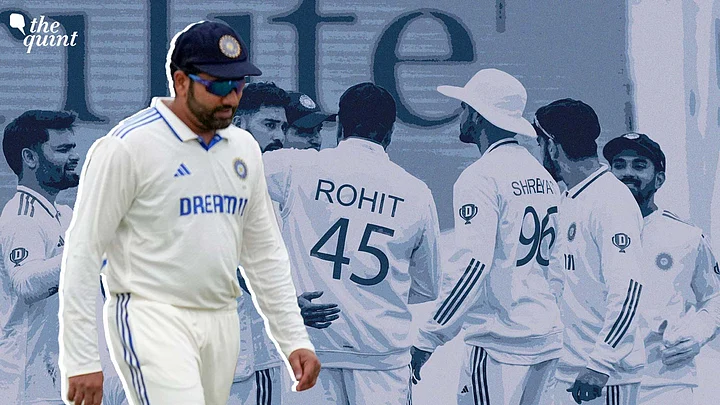In November 1992, when India and South Africa met in Durban, cricket witnessed a couple of ‘firsts’. From the Indian perspective, it was the first time the team, then led by Mohammad Azharuddin, toured the rainbow nation for a Test series. From the South African perspective, it was their maiden Test match on home soil in the post-Apartheid era.
On December 2023, over 31 years after the aforementioned meaning, India squandered the opportunity of scripting another ‘first’ – one that has eluded them for three decades.
A Test series win in South Africa.
England’s Oval was conquered by Ajit Wadekar’s India, way back in 1971. Australia saw Virat Kohli’s India establishing supremacy over Melbourne in 2018, before Ajinkya Rahane’s India breached Gabba in 2021. Mansur Ali Khan Pataudi’s India had stunned New Zealand in only their first visit in 1968.
And then, there is South Africa – the ‘S’ preceding the ‘ENA’, which remains impenetrable.
India’s 2023 – which, for all of its highs, will be remembered for agonising defeats – ended with another discomfiting loss. In Centurion, Rohit Sharma’s team lost the first of a two-match Test series by an innings and 32 runs, subsequently meaning they will not be returning with a series triumph.
The second-best option currently available is to salvage some dignity, and more importantly, some crucial World Test Championship (WTC) points, by winning the upcoming Test match in Cape Town, scheduled to be held from 3 to 7 January.
But, can they?
India’s Batting Collywobbles in South Africa
While India’s bowling was a tad subpar in Centurion, conceding 408 runs on a pitch which demanded a lot from the batters, India's batting copped the lion’s share of the blame for the loss, and rightfully so. Losing 20 wickets, India could only score 376 runs.
Indian batters’ struggle on South African tracks, which offer true bounce and seam movement, are highlighted by statistics.
In skipper Rohit Sharma’s case, who scored a five and a duck in the last Test, career Test average of 45.46 drops takes a nosedive to 12.80 on South African tracks. KL Rahul, despite being a centurion in Centurion, has a Test average of 30.08 in this nation.
The only exception in this case is Virat Kohli – India’s highest scorer in the last match – whose Test average in South Africa (52.06) is more than his career Test average (49.38).
Freshers Found Wanting
Then, there are the ‘freshers’ who have never faced a red ball in South Africa, and unsurprisingly, were found wanting for ideas in the first Test. Shubman Gill, who has the team management’s backing despite diminishing returns – at least, for now – scored 28 runs across the two innings, while Yashasvi Jaiswal scored 17.
A case can be raised about the pair’s selection over the serial chart-toppers in India’s premier red-ball domestic tournament, the Ranji Trophy. The pair have played a combined 64 first-class games, with Abhimanyu Easwaran, with 89 first-class appearances and 6585 runs, still waiting for his much-awaited Test debut.
Indian Pacers Falter, but Can They Be Blamed?
Albeit not the first on the blame list, the Indian bowlers could not utilise the purchase that Centurion offered like their Proteas counterparts did. Despite having played only 13 first-class matches, and having recovered from an injury only recently, Prasidh Krishna was preferred ahead of seasoned Ranji Trophy veteran, Mukesh Kumar.
His height could have been the decisive factor, but it was not put to use. While South Africa’s seamers did exactly what the hit-the-deck pitch demanded – that is, hitting the deck – Indian pacers went on a casual exploration.
Ultimately, Krishna ended up conceding 93 runs with only one wicket to his name, and barring Jasprit Bumrah, no Indian bowler could offer any threat.
Often Sparsely Used, Now Asked To Lead Resurgence
In the pacers' defence, one could cite the unfamiliarity with pace-friendly conditions.
Let us refer to India’s last home Test series – the Border Gavaskar Trophy against Australia. In Nagpur, the conditions were so lopsided in the spinners’ favour that India’s pacers bowled only 21.3 of 96.2 overs. Then in Delhi, only 26.4 of 109.5 overs were bowled by pacers. In Indore, the number was 13 of 96.2 overs, while in Ahmedabad, it was 69 of 245.3 overs.
While one cannot fault the intention of maximising home advantage by preparing pitches suiting one’s forte, it is perhaps harsh to blame the Indian pacers who rarely get to bowl 20% of the total overs on home turf. In addition, bowling on South African tracks demands patience, as displayed by Kagiso Rabada & Co. by consistently hitting the areas they earmarked, which will be a missing trait in sparsely used seamers.
Now struggling in the sixth position of the 2023-25 ICC WTC standings, a quick turnaround is peremptory for India. The challenge, for the reasons mentioned, is very likely to be difficult, but India, of all teams, have managed to overcome obstacles when they were least expected to.
(At The Quint, we question everything. Play an active role in shaping our journalism by becoming a member today.)
